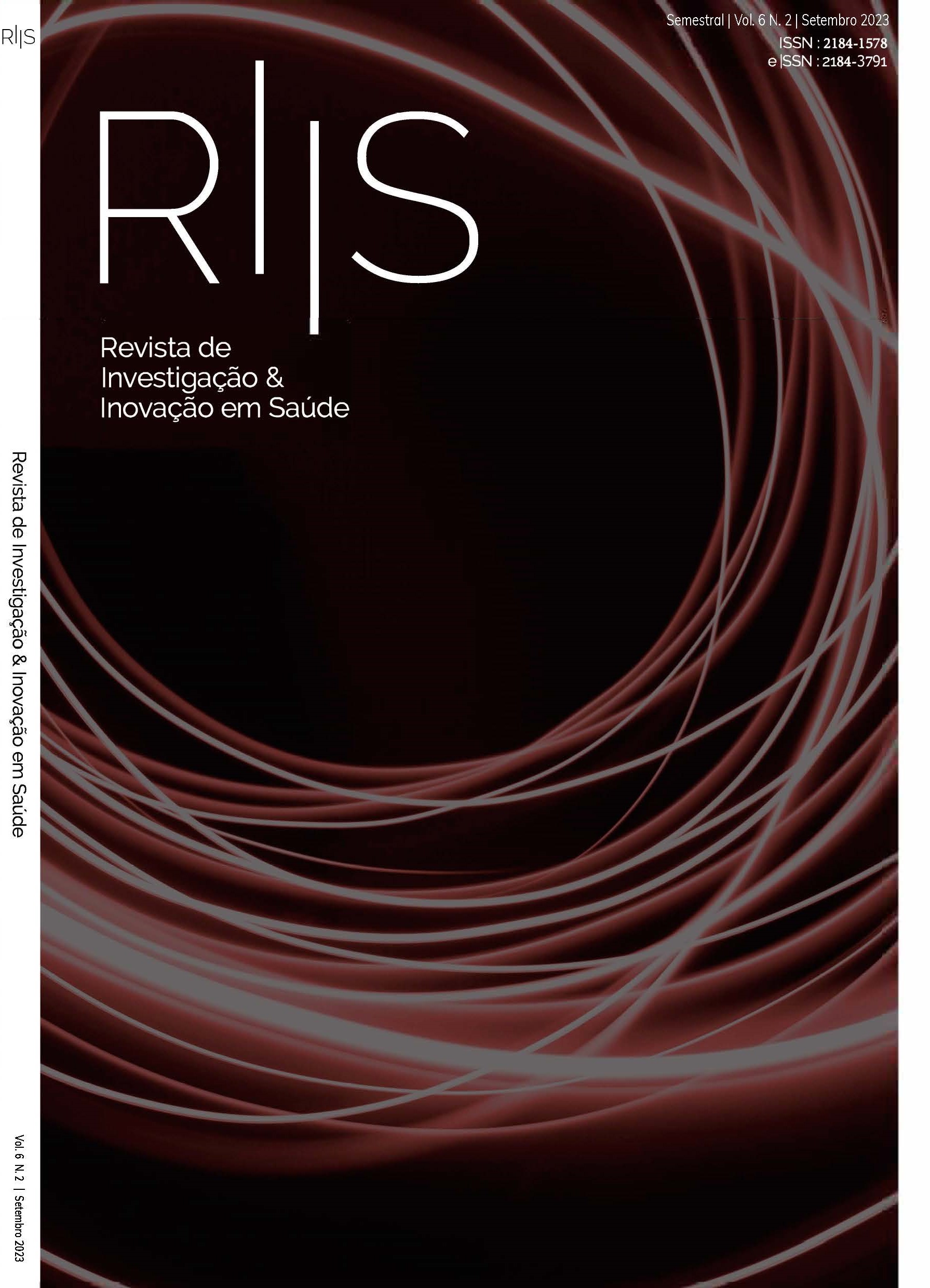Benefits of communication to the family in the emergency service: a systematic literature review
DOI:
https://doi.org/10.37914/riis.v7i3.315Keywords:
nurses, communication, family, emergency service hospitalAbstract
Background: the family accompanying the critically ill patient to the Emergency Department is an integral part of the critically ill patient and the provision of care. Objective: synthesize the scientific evidence of the effectiveness of nurse-led communication/information in reducing anxiety, stress, acceptance of illness/health/increasing patient and family safety. Methodology: the Systematic Literature Review was based on the PICO methodology, a search was carried out in the Pubmed CINAHL, Medline, SciELO and Scopus databases carried out in November 2022. Results: 539 articles were identified, and after removing duplicate articles, those that did not meet the inclusion criteria and methodological quality, the study was supported by 5 articles, in these studies family members, over 18 years old, recruited in the Emergency Department. A reduction in anxiety levels and an increase in acceptance of the illness was seen in most of the studies. Conclusion: it was found that the family of the critically ill patient in the Emergency Department benefits from the existence of a nurse who facilitates communication/information. There is a need for more research on this subject, and it is important to involve nurses in this issue.
References
Alves, C. M. P.M (2011). Atitudes dos enfermeiros face à família: stress e gestão do conflito [Dissertação de Mestrado, Universidade do Porto]. Repositório Aberto da Universidade do Porto. https://hdl.handle.net/10216/71914
Barreto, M. D. S., Marcon, S. S., Garcia-Vivar, C., Do Prado, E., Da Costa, J. R., Ferreira, P. C., & Seguraço, R. D. S. C. (2020). Vivência familiar do atendimento de emergência. Revista Baiana de Enfermagem, 34. http://dx.doi.org/10.18471/rbe.v34.35100
Blackburn, J., Ousey, K. Emma & Goodwin,E. (2019)-Information and communication in the emergency department, International Emergency Nursing, 42, 30-35. https://doi.org/10.1016/j.ienj.2018.07.002
Borges, D. R. O. (2015). A Comunicação com a Família em contexto de cuidados intensivos [Dissertação de Mestrado, IPVC . Instituto Politécnico Viana do Castelo]. Repositório Científico IPVC. http://hdl.handle.net/20.500.11960/1346
Botes, M. L., & Langley, G. (2016). The needs of families accompanying injured patients into the emergency department in a tertiary hospital in Gauteng. Curationis, 39(1). https://doi.org/10.4102/curationis.v39i1.1567
Chambel, É. M. G. M. (2012). Cuidar no serviço de urgência na presença de acompanhantes [Dissertação de Mestrado, ESEnfC - Escola Superior de Enfermagem de Coimbra]. Repositório científico da ESEnfC. http://repositorio.esenfc.pt/?url=avhsEG
Ekwall, A., Gerdtz, M., & Manias, E. (2009). Anxiety as a factor influencing satisfaction with emergency department care: perspectives of accompanying persons. Journal of Clinical Nursing, 18(24), 3489-3497. https://doi.org/10.1111/j.1365-2702.2009.02873.x
Fernandes, I. M. M. (2020). Desenvolvimento de competências em Enfermagem Médico-Cirúrgica na Área da Pessoa em Situação Crítica [Relatório Final de Estágio de Mestrado, Instituto Politécnico de Leiria]. IC-Online. http://hdl.handle.net/10400.8/5437
Ferreira, A. R., Gomes, J. F. C., & Martins, C. A. (2016, maio, 26-27). Um (novo) cuidar: os acompanhantes no Serviço de Urgência [Apresentação em poster]. I Congresso de Enfermagem da José de Mello Saúde "Enfermagem: A ciência do cuidar", Hospital de Braga. https://hdl.handle.net/1822/42328
Frank, C., Asp, M., & Dahlberg, M. (2009). Patient participation in emergent care- a phenomenographic study based on patients’ lived experiences. International Emergency Nursing, 17(1), 15–22. https://doi.org/10.1016/j.ienj.2008.09.003
Glasofer, A., & Townsend, A. B. (2019). Determining the level of evidence: Experimental research appraisal. Nursing Critical Care 14(6), 22-25. http://dx.doi.org/10.1097/01.CCN.0000580120.03118.1d
Gomes, F., Amendoeira, J., & Martins, M. (2012). A Comunicação no Processo Terapêutico das Famílias de Doentes Mentais. Revista portuguesa de enfermagem de saúde mental, (7). https://doi.org/10.19131/rpesm.0080
Hettinger, A. Z., Benda, N., Roth, E., Hoffman, D., Iye, R. A., Franklin, E., Perry, S., Fairbanks, R.J., & Bisantz, A.M. (2020). Ten Best Practices for Improving Emergency Medicine Provider-Nurse Communication. J Emerg Med., 58(4), 581-593. https://doi.org/10.1016/j.jemermed.2019.10.035
Hsiao, P. R., Redley, B., Hsiao, Y. C., Lin, C. C., Han, C. Y., & Lin, H. R. (2017). Family needs of critically ill patients in the emergency department. International Emergency Nursing, 30, 3-8. https://doi.org/10.1016/j.ienj.2016.05.002
Kamchuchat, C., Chongsuvivatwong, V., Oncheunjit,S. Yip, T.W., & Sangthong, V. (2008). Workplace violence directed at nursing staff at a general hospital in southern Thailand. J Occup Health, 50(2), 201-207. https://doi.org/10.1539/joh.O7001
Internacional Council of Nurses. (2013). International Classification for Nursing Practice. Internacional Council of Nurses. https://www.icn.ch/icnp-browser
Li T., Higgins J. P. T., & Deeks J. J. (2020). Collecting data, in Cochrane Handbook for Systematic Reviews of Interventions version 6.1, eds J. P. T., Higgins, J., Thomas, J., Chandler, M., Cumpston, T., Li, M. J., Page, V. A. Welch. Cochrane. http://www.training.cochrane.org/handbook
Lukmanulhakim, L., Suryani, S., & Anna, A. (2016). The relationship between communication of nurses and level of anxiety of patient’s family in emergency room. International journal of research in medical sciences, 5456–5462. https://doi.org/10.18203/2320-6012.ijrms20164228
Morelló, M. C. B., López, G. M., & Grau, C. F. (2016). El proceso de cuidar a la familia en urgencias. Una aproximación desde la teoría fundamentada. Metas de Enfermeria 19(8), 63-70. https://dialnet.unirioja.es/servlet/articulo?codigo=5655651
National Accident and Emergency Patient Survey (2014). Care Quality Commission. https://www.cqc.org.uk/sites/default/files/20141201_accident_and_emergency_survey_2014_key_findings.pdf
Phaneuf, M. (2005). Comunicação, entrevista, relação de ajuda e validação. Lusociencia.
Pytel, C., Fielden, N. M., Meyer, K. H., & Albert, N. (2009). Nurse-patient/visitor communication in the emergency department. Journal of Emergency Nursing: JEN: Official Publication of the Emergency Department Nurses Association, 35(5), 406–411. https://doi.org/10.1016/j.jen.2008.09.002
Redley, B., LeVasseur, S. A., Peters, G., & Bethune, E. (2003). Families’ needs in emergency departments: instrument development. Journal of Advanced Nursing, 43(6), 606–615. https://doi.org/10.1046/j.1365-2648.2003.02759.x
Redley, B., Phiri, L. M., Heyns, T., Wang, W., & Han, C.-Y. (2019). Family needs during critical illness in the Emergency Department: A retrospective factor analysis of data from three countries. Journal of Clinical Nursing, 28, 15-16. https://doi.org/10.1111/jocn.14857
Sá, F.L.F.R. G, F., Botelho, M., & Henriques, M. (2015). Cuidar da Família da Pessoa em Situação Crítica: A Experiência do Enfermeiro. Pensar Enfermagem, 19(1), 31-46. https://doi.org/10.56732/pensarenf.v19i1.102
Saiote, E.C.G (2010). A percepção dos enfermeiros sobre a importância da partilha de informação com os familiares numa unidade de cuidados intensivos. [Dissertação de Mestrado, Iscte - Instituto Universitário de Lisboa]. Repositório Iscte. http://hdl.handle.net/10071/2613
Saiote, E., & Mendes, F. (2011). A partilha de informação com familiares em unidade de tratamento intensivo: importância atribuída por enfermeiros. Cogitare Enfermagem, 16(2). https://doi.org/10.5380/ce.v16i2.21814
Sousa, L., Almeida, A., & Simões, C. J. (2011). Vivências em Serviço de Urgências: o papel dos acompanhantes dos doentes. Saúde e Sociedade, 20(1), 195-206. https://doi.org/10.1590/s0104-12902011000100021
Stefalelli, M. C., & Carvalho, E. C. (2012). A comunicação nos diferentes contextos de enfermagem. Manole.
Tufanaru, C., Munn,Z., Aromataris, E., Campbell, J., & Hopp, L. (2017). Chapter 3: Systematic reviews of effectiveness. In: E., Aromataris, & Z., Munn, (Eds). JBI Reviewer's Manual. JBI. https://dx.doi.org/10.46658/JBIRM-17-03
Vieira, E. J. M., & Sousa, P. P. (2014). As estratégias de comunicação no cuidado à pessoa em situação critica [Dissertação de Mestrado, Universidade Católica Portuguesa]. Veritati. http://hdl.handle.net/10400.14/16387
Wieke, L., Ahsan, A., & Sudartya, T.S. (2021). Exploring the relationship between nurses' communication satisfaction and patient safety culture. Journal of Public Health Research, 10(2), 2225. https://doi.org/10.4081/jphr.2021.2225
Downloads
Published
How to Cite
Issue
Section
License
Copyright (c) 2024 Ivone Fernandes, Maria dos Anjos Dixe

This work is licensed under a Creative Commons Attribution 4.0 International License.















